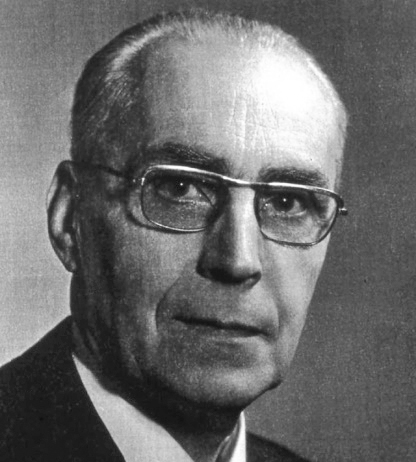- THE IASS
- Actors & Projects - Esquillan's Projects
- Bercy market-deliveries. Gare de Lyon, rue de Charolais,12th district of Paris (1910)
- Sapiac bridge. On the Tarn river in Montauban (1910-1911)
- Reims hangars. (1927)
- Karouba hangars. Near Bizerte in Tunisia (1931)
Bridges and miscellaneous works
- La Roche Guyon bridge. Over the Seine river (1934)
- La Coudette bridge. Over the Gave river in Pau, near Peyrehorade in the Landes (1938-1939 and 1941-1942)
- Mediterranean railway viaduct. Over the Rhône river, south of Lyon (1949-1950)
- Cocody water tower. In Abidjan in Ivory Coast (1953)
- La Voulte railway bridge. Over the Rhône river, south of Lyon (1952-1955)
- Houphouët-Boigny bridge. On the lagoon in Abidjan in Ivory Coast (1954-1957)
- Moret viaduct. On the RN 5 highway, on the two arms of the Loing river and the canal (1956-1957)
- Tancarville bridge pylons. On the Seine river, south of Le Havre (1957-1958)
Thin shells: Marignane
- Double hangar for Marseille airport (1949-1952)
Thin shells: CNIT
- Exhibition hall in Paris-La Défense (1956-1958)
Other thin shells
- Castillon avalanche barrier. On the RN 618 near La Mongie (1959)
- Centenary Exhibition Hall, Turin exhibition centre. Firm of Gastone Gerrini (1961)
- Ice stadium. Boulevard Clémenceau in Grenoble. Firms Boussiron and Limousin (1965-1967)
Boussiron: bridges and thin shells
Simon Boussiron (1873-1958)
Engineer and building contractor, Simon Boussiron founded his business in 1899; he was also chief of the design office until his retirement in 1936. As from 1906, he took out a patent for a triple-hinged arch, and oriented his business toward civil engineering structures and soon after, toward thin shell structures.
Bercy market-deliveries. Gare de Lyon, rue de Charolais,12th district of Paris (1910).
These were the first thin shells, of medium span, 10 m, but with a 4 m glass lantern. The two vault sections, held up by a line of columns, are linked at intervals by beams which pass under the lantern and support it. At right angles to the beams, tie-rods fixed to the roof hold out an 8 cm thick overhanged canopy, like shells.
 |
| Bercy market-deliveries (1910) |
The two 53 and 56 m arches, lowered to a sixth, rest on piles whose spandrels were hollowed out to a maximum to allow for the formidable rise in river levels. The vaults are hinged to reduce their mean thickness to 0.75 m.
 |
| Montauban bridge (1911) |
Following the success of Bercy, the hangars (for locomotives, and later for aircraft) became one of the firm?s specialities. The two halls are 50 m in width and depth. Clearance height under the ceiling joist is 13 m, with roof trusses spaced at 5.55 m.
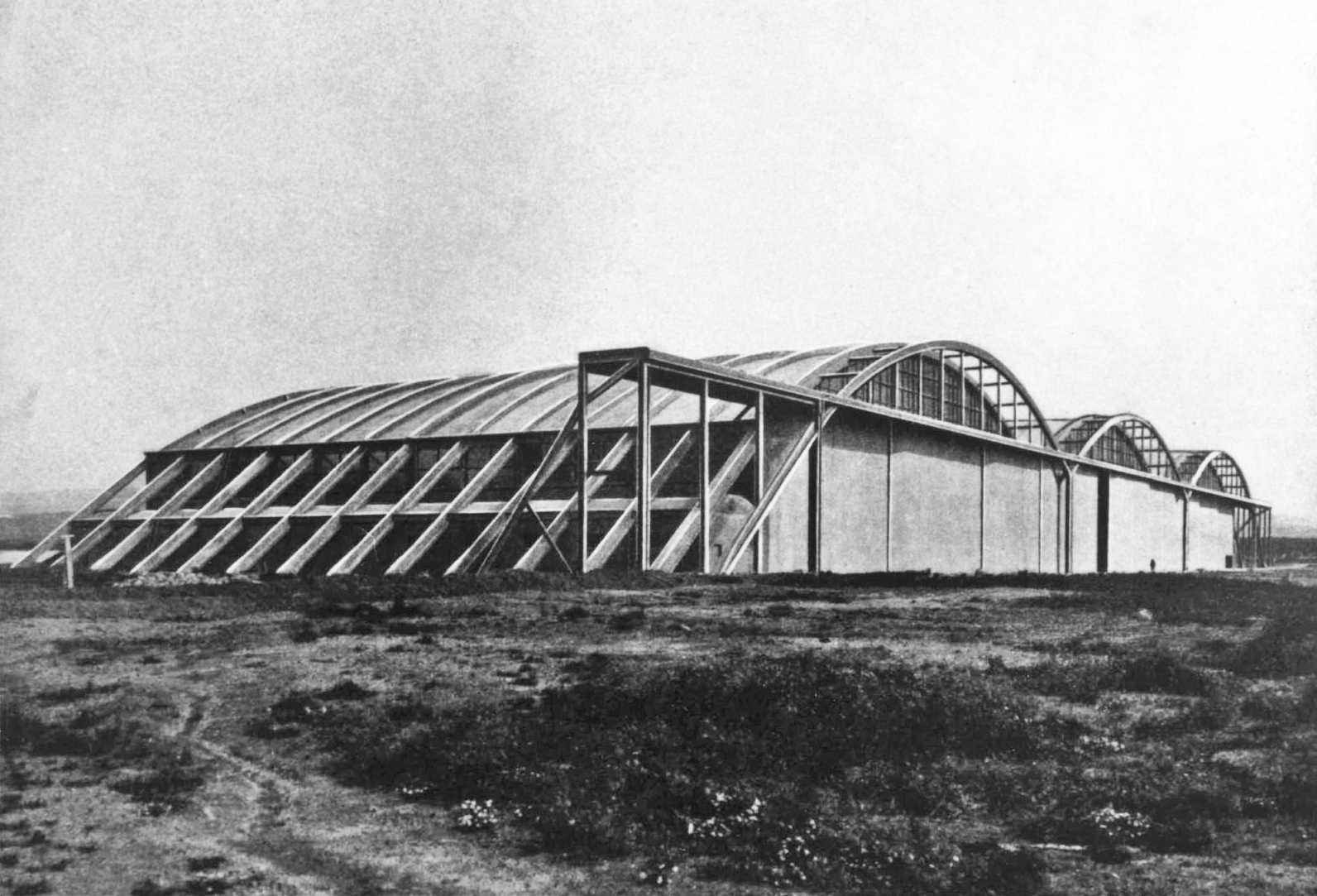 |
| Reims hangars (1927) |
Karouba hangars. Near Bizerte in Tunisia (1931)
Designed to house hydroplanes, the three joined hangars were composed of 65.50 m vaults without tie-rods, each with headroom clearance of 25 m under the keystone. The shell measured 7 cm in thickness.
 |
| Karouba hangars (1931) |
Bridges and miscellaneous works
La Roche Guyon bridge. Over the Seine river (1934)
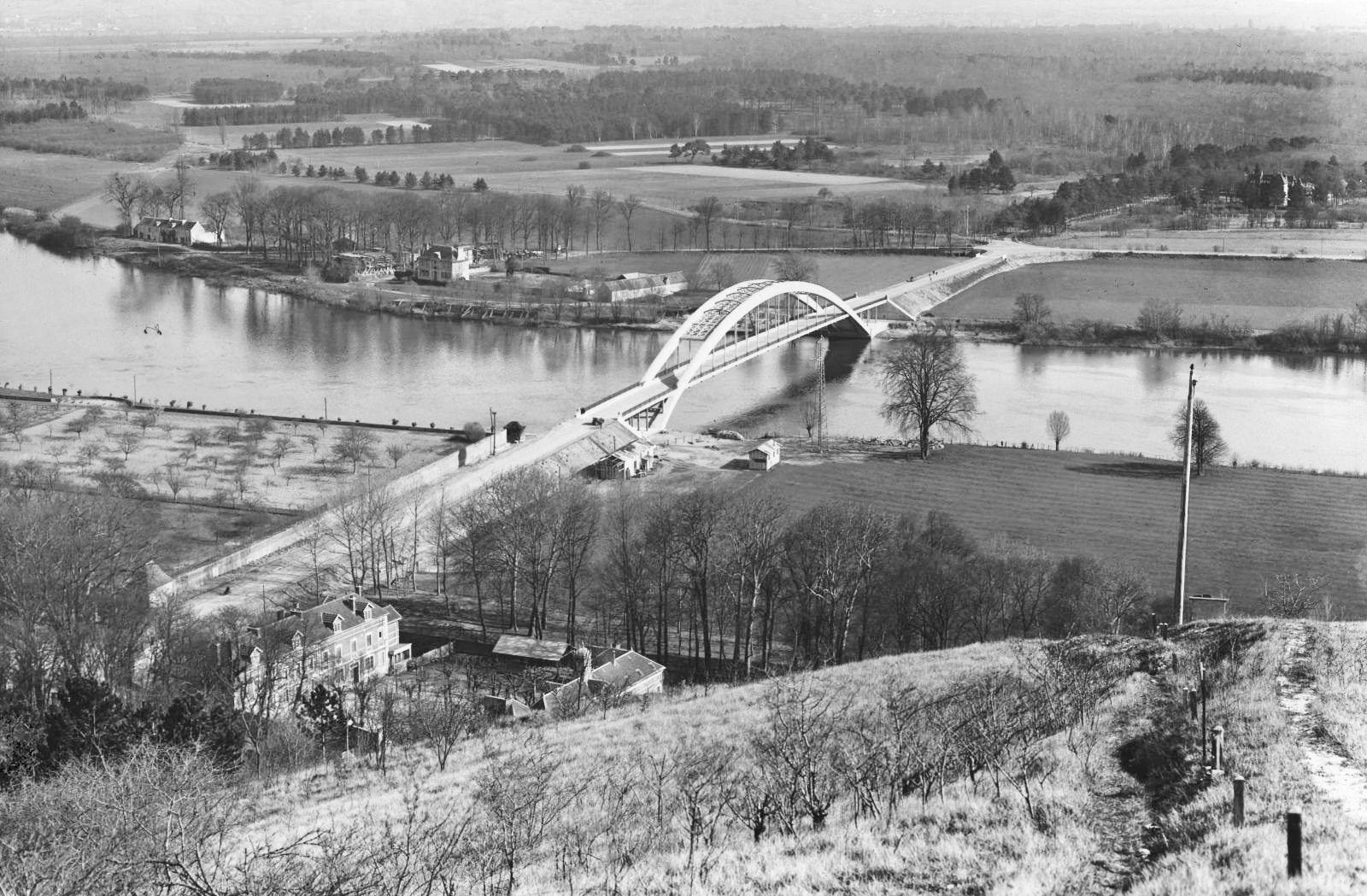 |
| La Roche-Guyon bridge (record, 1934) |
La Coudette bridge. Over the Gave river in Pau, near Peyrehorade in the Landes (1938-1939 and 1941-1942)
A bowstring with triangulated elements, angled at 42°, its arches span 111 m, also earning a world record. Interrupted by the war, this work was particularly remarkable: the arches were cast on two semi-falseworks hoisted onto a provisional mast constructed in the centre of the bridge.
 |
| La Coudette bridge (record, 1942) |
Mediterranean railway viaduct. Over the Rhône river, south of Lyon (1949-1950)
It was rebuilt over the remains of the original 5-spans cast iron construction, by removing the two central piles. The central span measures 124 m; it is suspended from two reinforced concrete fixed arches with variable inertia, supported on the riverbed at the two abutments. The arches were reinforced along the deck to allow for the passage of bicycles, numerous at the time, without deflecting the line of the parapet.
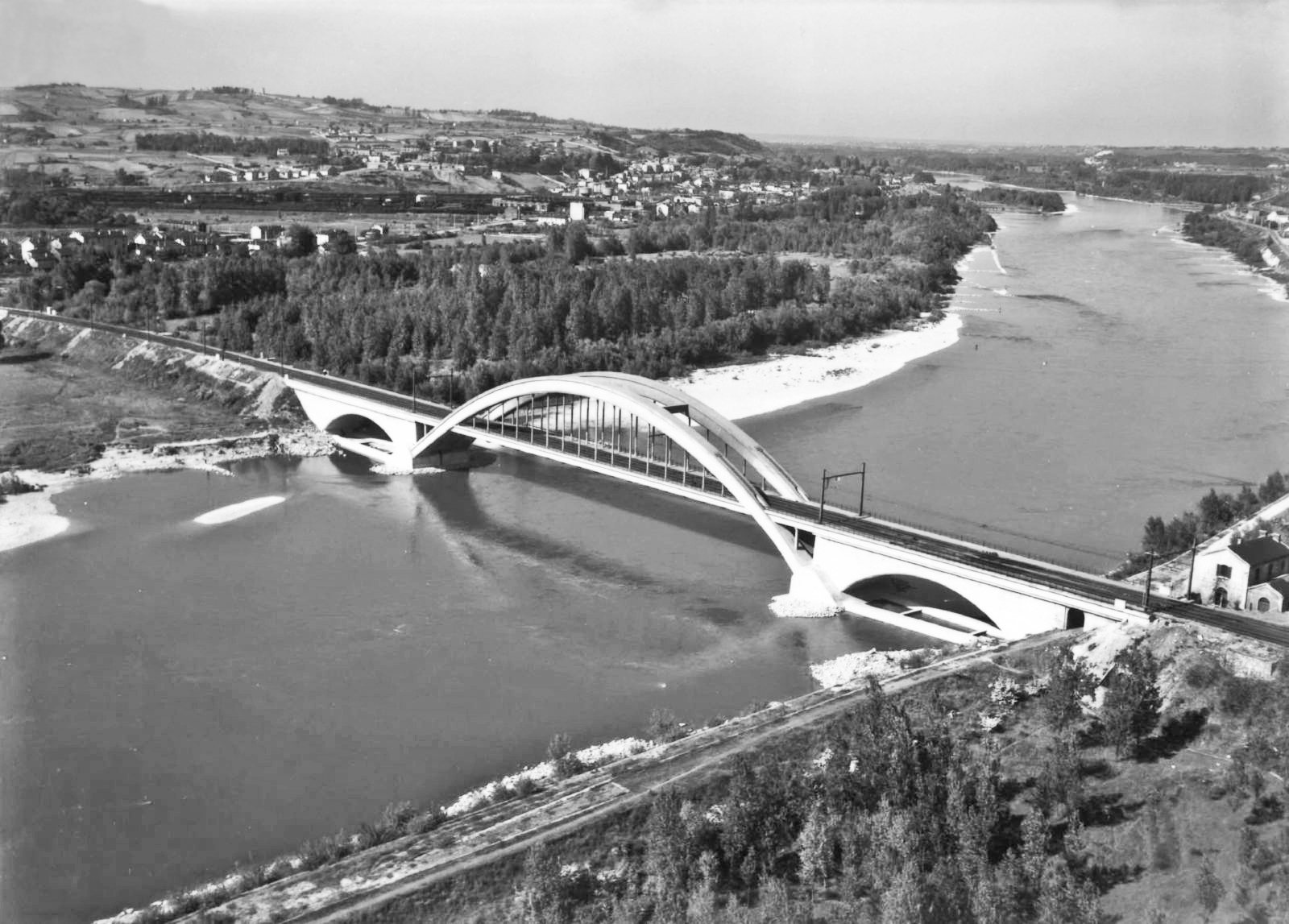 |
| Mediterranean viaduct (record, 1950) |
Cocody water tower. In Abidjan in Ivory Coast (1953)
Owing to the lack of wood, the 2000 m3 tank was built on the ground then erected with jacks to a height of 26 m. The tank measured 6.35 m in height, with 13 m in diameter at the base and 30 m at the top. With the increase in the population of the Cocody district, came an increase in the demand for water, so that the tank was later raised by several metres.
 |
| Cocody water tower (1953) |
La Voulte railway bridge. Over the Rhône river, south of Lyon (1952-1955)
The first big French railway bridge in prestressed concrete, it crossed the Rhône in five 56 m spans. At 300 m, it was also the longest bridge in the world laid with railway track, and the first to be built as a corbelled construction. At the request of the SNCF, it was the site of a new cable-torsion prestressed process.
 |
| La Voulte bridge (record, 1955) |
Houphouët-Boigny bridge. On the lagoon in Abidjan in Ivory Coast (1954-1957)
The bridge supports two railway tracks on the deck and a 14 m wide double lane for vehicles. It measures 361 m in length in eight 36.50 m spans. The main difficulty arose from the muddy terrain to an average depth of 40 m, below 10 m of water. Entirely prefabricated, it was built in thirty-one months.
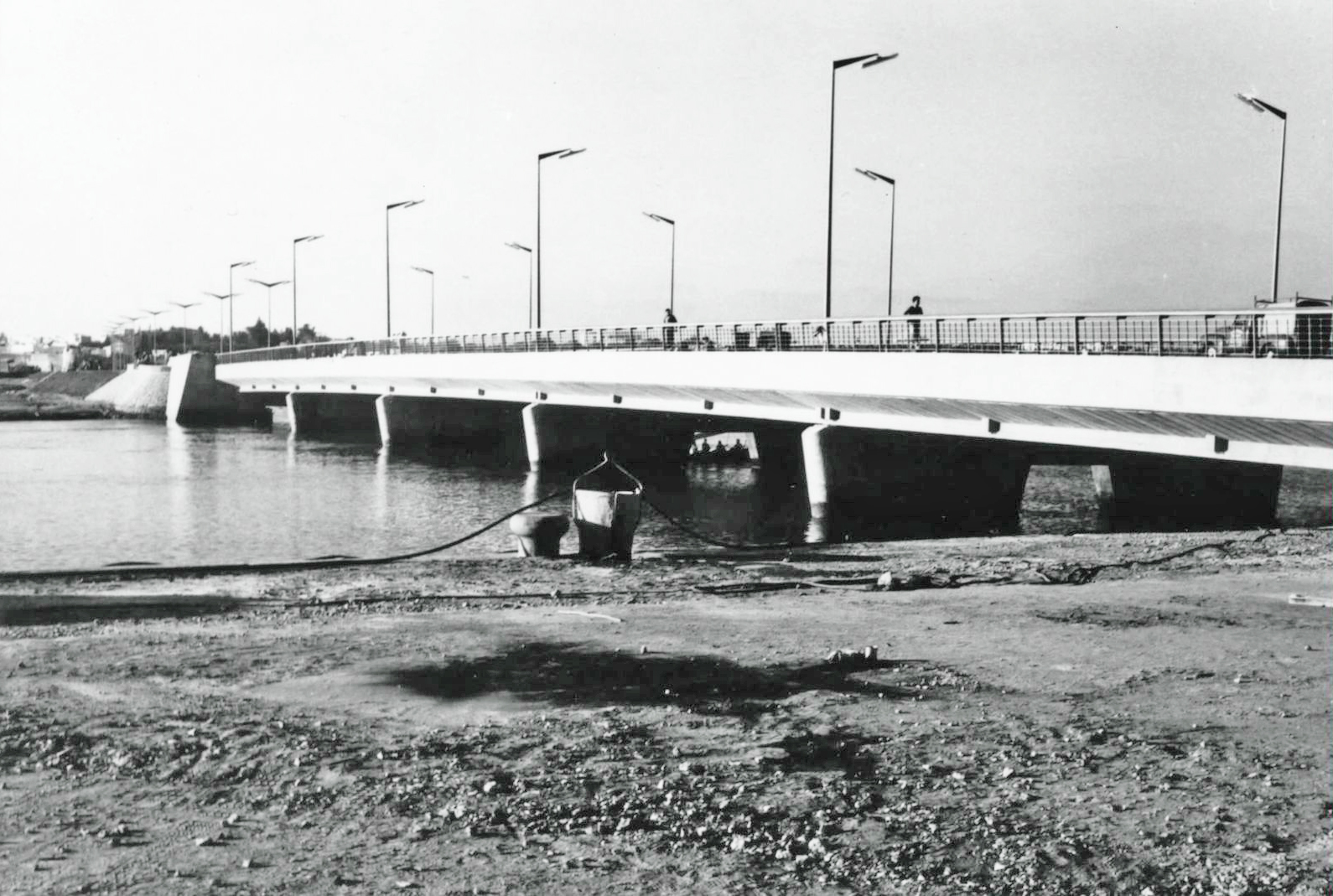 |
| Houphouët-Boigny bridge (1957) |
Moret viaduct. On the RN 5 highway, on the two arms of the Loing river and the canal (1956-1957)
Stretching over 320 m, it was entirely prefabricated and took fourteen months to build.
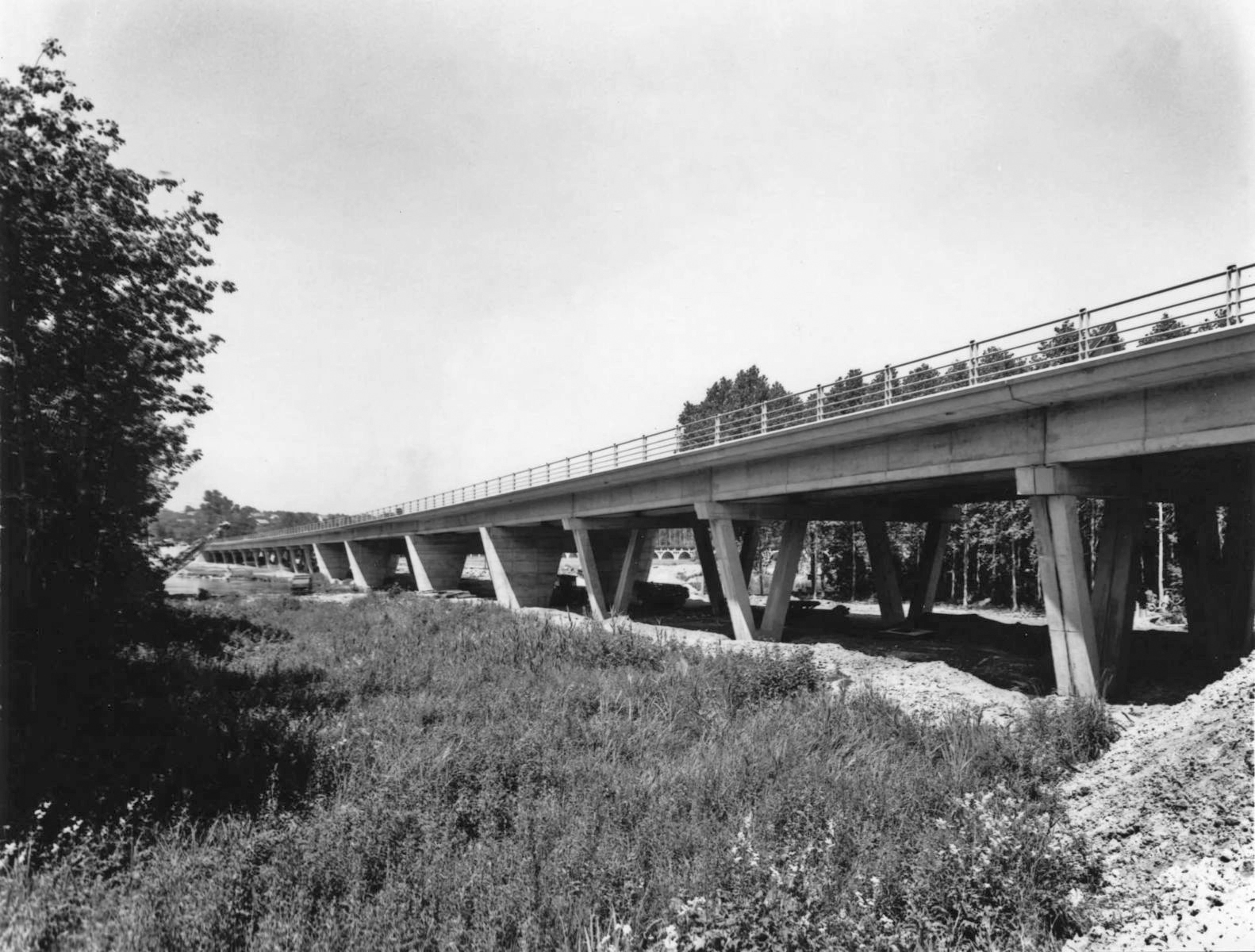 |
| Moret viaduct (1957) |
Tancarville bridge pylons. On the Seine river, south of Le Havre (1957-1958)
Measuring 122 m in height, these reached a world record. Built on a box-frame, each is comprised of two upright pillars, on top of which is the moulded steel support of the main cable.
 |
| Tancarville pylons (record, 1958) |
THE IASS | JOURNAL INFO | TECHNICAL ACTIVITIES | MEMBERSHIP |
